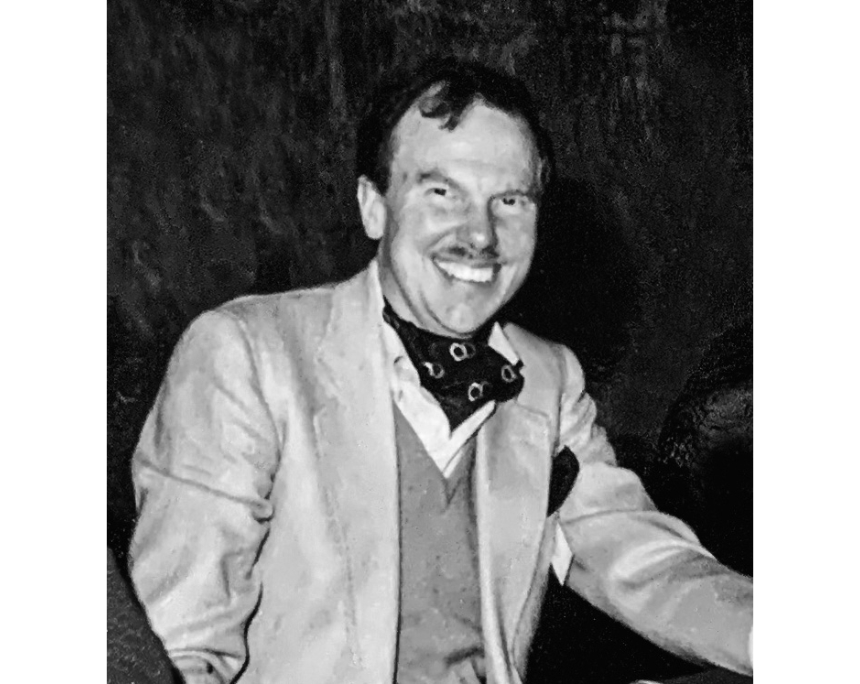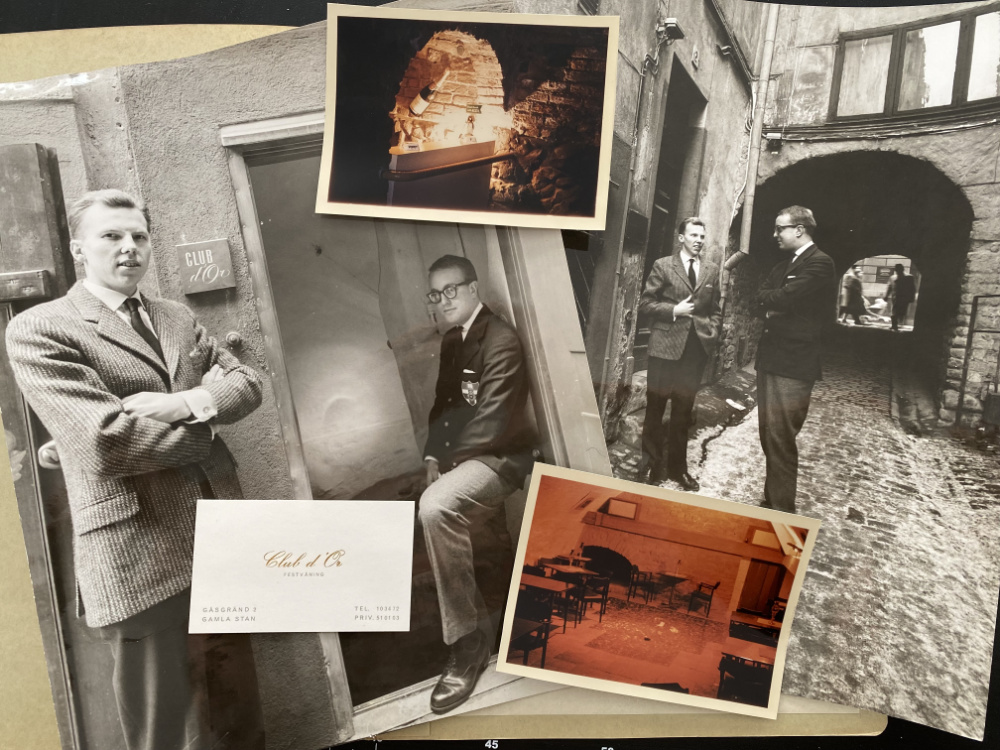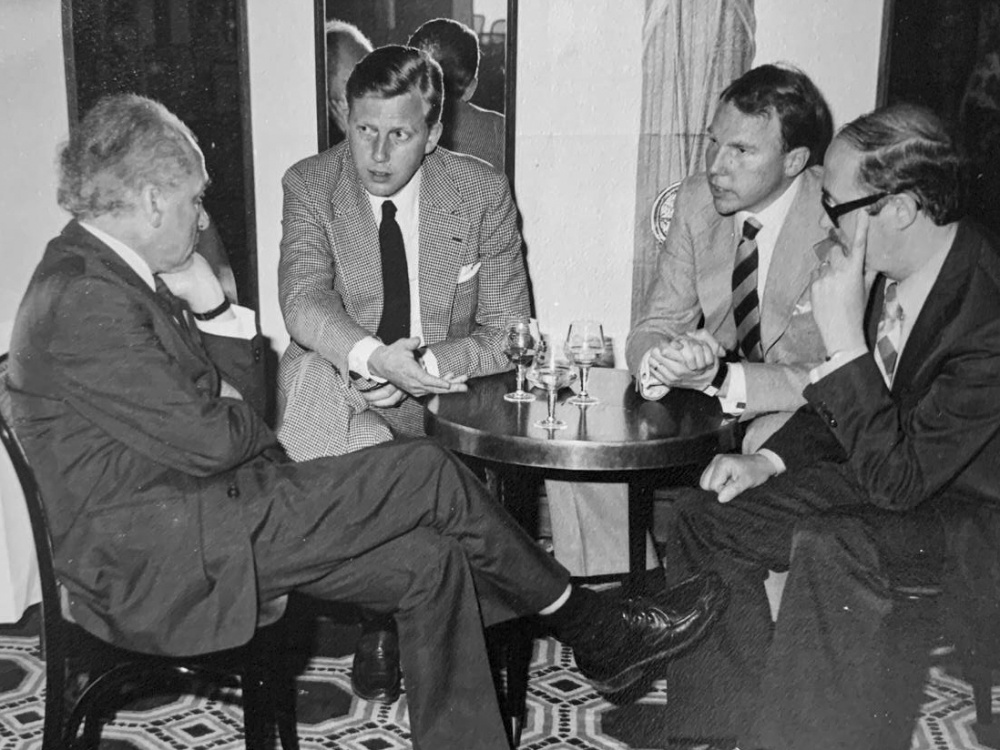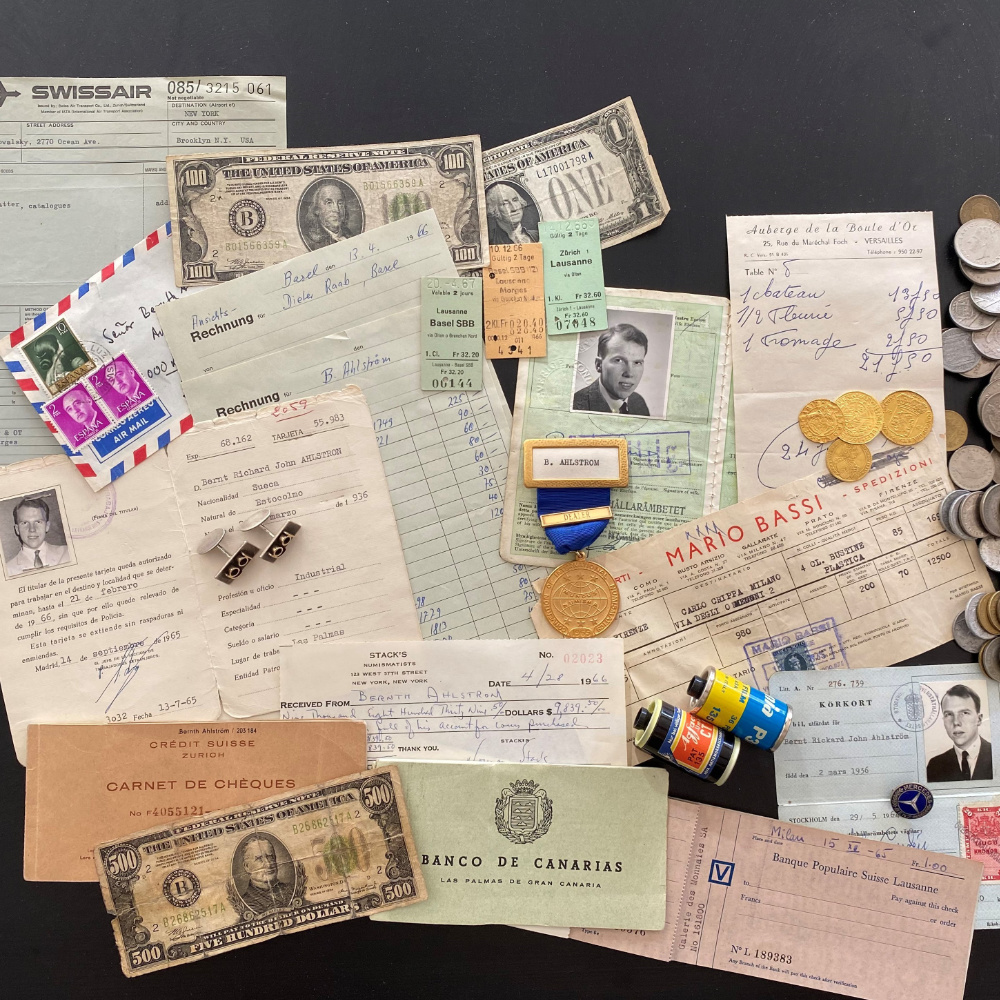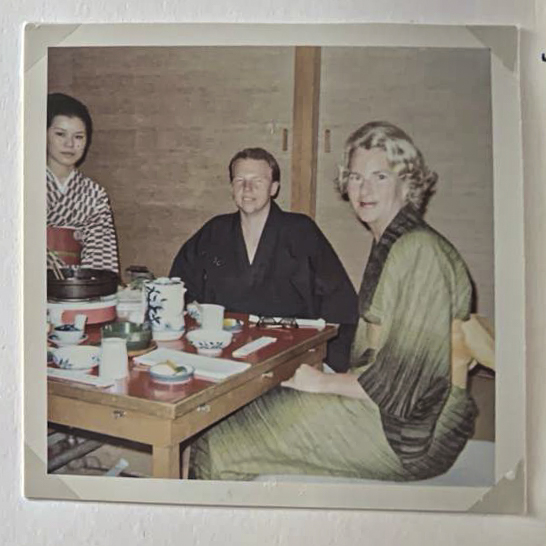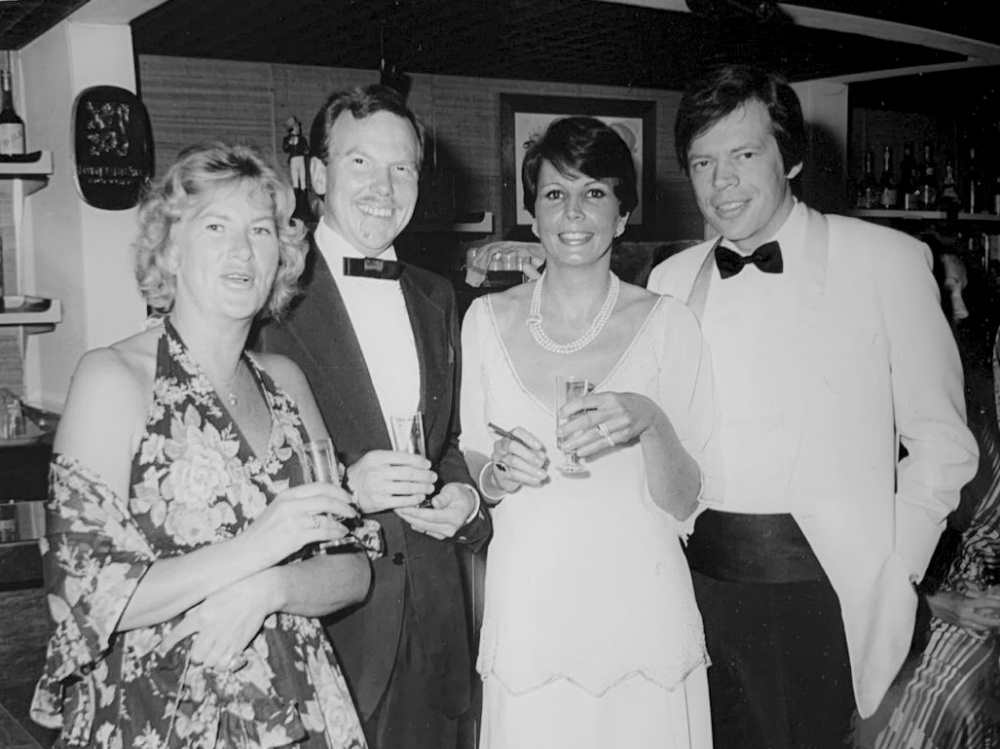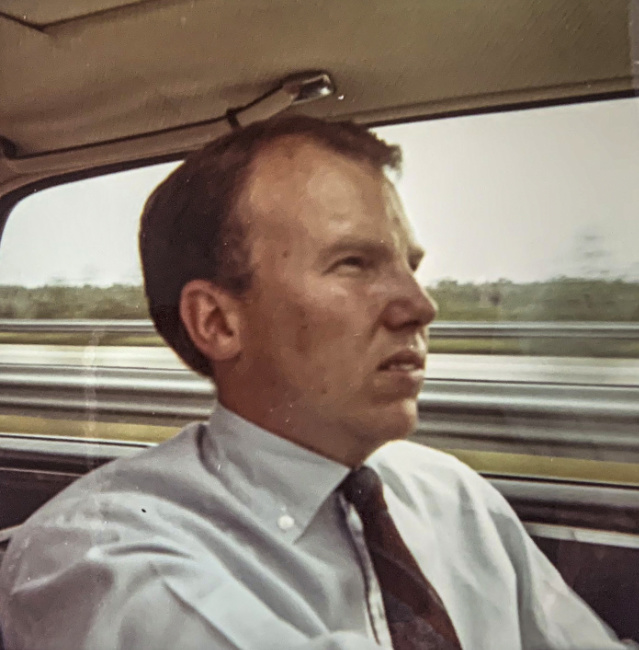Bernt Ahlström (1936-2019)
by Arne Kirsch
You will hardly find a dealer in the numismatic world who is completely unfamiliar with the name Bernt Ahlstrom. On the occasion of the sale of his numismatic library at Gut-Lynt, Arne Kirsch recounts the eventful life of the coin dealer and bon vivant.
Content
When I picked up my first coins and books on coins and medals in Schleswig-Holstein in 1978, Bernt Ahlström was already a regular guest in the far north of Germany, bringing both consignments and stories with him. Numismatics was his passion, his life, and there was no place he would have avoided in order to pursue this passion. He could be found at almost every coin fair or auction around the world – usually accompanied by his dog.
1950s – The Early Stockholm Years
Bernt Rickard John Ahlstrom was born in Stockholm on March 2, 1936. Before he began his sixty-year numismatic career, he gave it a start as a young nightclub owner in Stockholm’s old town. In 1954 – at the age of just 18 – he opened the “B. Ahlstrom Mynthandel” (also in Stockholm) at his father’s suggestion (who, by the way, was a passionate and well-known philatelist). And just a short time later we already find him at the legendary auction of the Farouk collection – held by Sotheby’s in Cairo in February and March 1954 – as one of the buyers of the Swedish part of this enormous coin collection. A few years later, he took his brother Bjarne with him into the business. While Bjarne remained in Stockholm and continued to run the business with great success – his last Stockholm coin auction took place in 2004 – Bernt took his ideas and ambitions out into the world.
1960s and 1970s – Establishing the “Galerie Des Monnaies” Group: Geneva, Düsseldorf, New York
In the 1960s, he settled in Lausanne and built up the “Galerie des Monnaies” (GDM) group of companies, which initially operated in Lausanne (1965) and later in Geneva (1973), Düsseldorf (1969), New York (1976) and Paris (1979). By the end of the 1960s, close business contacts had already been established with New York (a Gold catalog of the “Galerie des Monnaies” from 1969, for example, listed Robert L. Steinberg, New York, N.Y. as a cooperation partner on the cover). In the mid-1970s, Bernt Ahlstrom shifted his operational focus entirely to New York. He set up a large office in Manhattan and made a name for himself as an extremely influential coin dealer in the years that followed. Sensational sales, including world records at the time, which he was able to achieve in cooperation with established auction houses such as Hans Schulman Auctions, Sotheby’s, Credit Suisse and Spink & Son Ltd, contributed to his success.
He was thrilled when he set up the New York branch of the “Galerie des Monnaies of Geneve Ltd.” in a former branch of the Chase Manhattan Bank with vaults in the basement. These years marked the climax of his numismatic career. But as “royal” and spectacular as his entry into the busy New York “jungle” was, it ultimately led to the decline of his “empire”.
Here is a brief anecdote that succinctly captures his character – as a bon vivant and a trader (but could you really tell the difference with him?): in 1968, he married his second wife Eva. They decided to spend their honeymoon in Japan. During their trip, they explored cities such as Kyoto, Tokyo as well as Nagasaki and enjoyed the culture of the island nation with its wealth of sights, charismatic places and traditional customs. Equally remarkable, however, was that Bernt Ahlstrom managed to turn even this honeymoon into a profitable business: By selling a single Japanese coin, he covered the entire cost of their luxurious trip (including the exquisite hotel addresses where they stayed). A “classic” example of Bernt Ahlstrom’s ability to combine savoir-vivre with an entrepreneurial spirit.
1970s and 1980s – Ambitious Conquest of Paris and Eventual “Retreat” to the United States
Together with his second brother John Ahlstrom, he founded a wine store, the “Galerie des Vins”, in Paris in the mid-1970s. A little later, he decided to purchase a private bank in Paris, the “Crédit de la Bourse” (1976). Finally, in 1980, the prestigious Place Vendôme became the location of another branch of the “Galerie des Monnaies” sharing the premises with the renowned Italian jewelry house “Buccellati.” A company brochure from around this time proudly states: “Rare coins and classical antiques will now share this superb location with examples of the world’s finest handcrafted jewellery”. Ahlstrom’s group of companies now advertised the impressive locations of Geneva, Düsseldorf, New York and Paris. The ambitions of the group of companies and the breadth of the business areas were generously conceived; probably too generously – in Paris he ultimately failed.
In the mid-1980s, Ahlstrom gradually closed his European businesses, “returned” to the USA and founded the auction house “El Dorado” with Alcedo Almanzar in San Antonio, Texas. In an obituary (2020), Paul J. Bosco summarized the relationship as follows: “Later Ahlstrom partnered with Alcedo Almanzar, operating an auction house in the 1980s, El Dorado. Significantly, it was sometimes called ‘El Diablo’. It is believed Almanzar cheated his partner, likely making him the only person ever to get the drop on Ahlstrom.”
Passion for the Olympics – Opening up a New Entrepreneurial Niche
Also in the 1980s, Ahlstrom discovered a new field of business, which he conquered with his own blend of passion, persuasiveness, tenacity, networking and entrepreneurial instinct, and in which he eventually became recognized as one of the world’s leading dealers and connoisseurs. We are talking about memorabilia and collectibles related to the modern Olympic Games.
It all began like this: During an auction at Heinrich Winter’s in Düsseldorf, a set of pins from the 1960 Olympic Games in Rome was sold for 15,000 Deutsche Mark (DEM). Ahlstrom, who was present, whispered to a colleague: “If someone is prepared to pay that kind of money for a few Olympic pins, then there must be good business opportunities here.” Some time later, he met Juan Antonio Samaranch, then President of the International Olympic Committee (IOC). Samaranch told him about his ideas and plans for an Olympic Museum in Lausanne (Switzerland); now his business interest was finally piqued – and with it the prospect of a new entrepreneurial niche in the collectibles sector: Olympic memorabilia.
He began scouring the world for anything bearing the five Olympic rings. He became so well known in the relevant circles that the US Olympic Committee included him among the participants in the torch relay at the Summer Olympics in Atlanta in 1996 and of course he kept the torch… Bernt Ahlstrom’s obsession with Olympic items was not just of a business nature, however – over the decades he had amassed an impressive private Olympics collection. Ingrid O’Neil once said: “He’s not a collector. Bernt simply wants to have it all.” Entering his home, you could suddenly find yourself standing in front of a two-man bobsleigh, an official uniform of Olympic organizers, not to mention the numerous pennants, flags and other souvenirs.
In 2014, Ahlstrom offered a winner’s medal from the 1896 Olympics at an auction in London. It was estimated at around 40,000 pounds sterling. In his presence, two wealthy collectors got engaged in a hard-fought bidding battle for the medal on offer. The starting price of 20,000 pounds rose steadily and relentlessly until the hammer finally fell at 180,000. – The audience rose to its feet and applauded with a standing ovation. Who else but Ahlstrom could have achieved such an “insane result”?

Ahlström 2019, about a month before his death, bidding by telephone at an auction. Photo: Family Archive.
Global Player, Clever Networker, Excellent Numismatist
At one of our last meetings in Zurich, he told me a lot about his 60-year career – unfortunately far too little, he hadn’t written anything down. What remains is the memory of a clever, sometimes “cunning” businessman who knew his trade as a dealer and collector. For me personally, he was one of the first internationally operating coin dealers and embodied the type of “global player” that we take for granted today. He was an excellent numismatist whose knowledge covered an impressively wide range of fields. He had excellent contacts. He was a key player in several markets and was present at all the major fairs worldwide. He was full of ideas and ambition, and not afraid to take risks. He enjoyed considerable respect, but was not always easy to deal with and sometimes came up with somewhat – shall we say – “dodgy” solutions.
Bernt Ahlstrom passed away in December 2019 after a serious bout with cancer, having challenged doctors, illness and the devil. He was still traveling and bidding at auctions until his last week.
His numismatic library, which we are pleased to offer over several Gut-Lynt online auctions (the first part will go on sale on April 6, 2024 in Münzen Gut-Lynt Auction 16) once again impressively demonstrates what a passionate numismatist he was, who not only wanted to trade coins and medals, but also to study them intensively – even if he usually lacked the time to do so.
Arne Kirsch, Tönisvorst, spring 2024







